Thien Hau Pagoda is a special place filled with history and spirituality. A rich background and unique architecture make it a captivating destination that lets visitors explore the traditions of the Chinese community in Vietnam. In this blog, let’s take a tour to discover the secrets of this pagoda, exploring its fascinating history, detailed architecture, and lively cultural celebrations.
Brief History of Thien Hau Pagoda
The pagoda is dedicated to Thien Hau Thanh Mau, originally named Lam Mac Nuong, a respected figure believed to have been born in Fujian, China, in 1044. She is known for being very intelligent and enlightened from a young age. By the age of eight, she could read; by eleven, she had become a Taoist practitioner. At thirteen, she received a divine poem from God, which helped her achieve enlightenment.
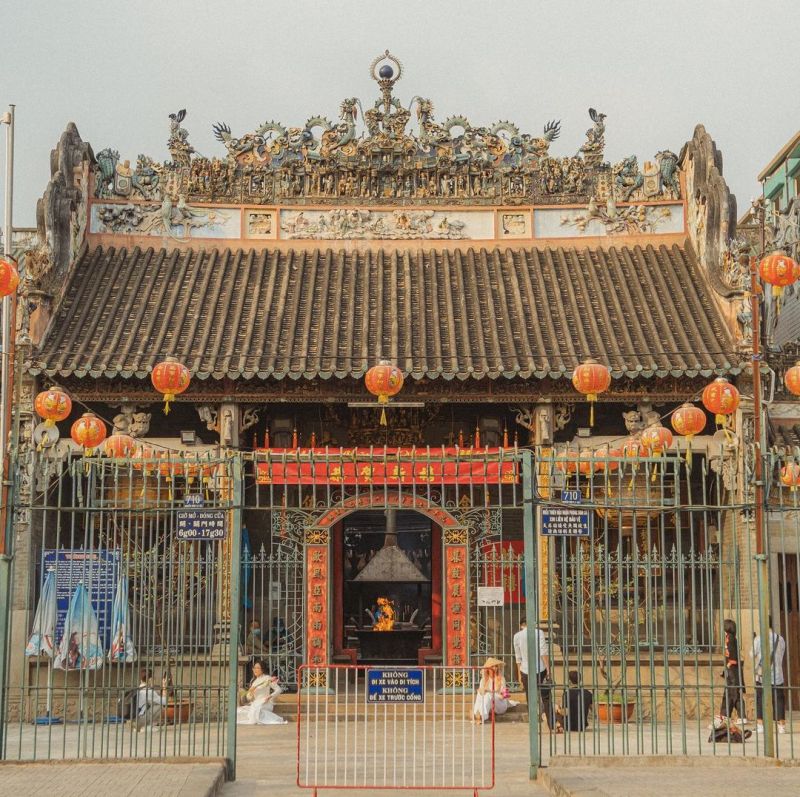
A famous legend tells of a time when her father and two brothers were caught in a storm at sea while transporting salt. While weaving cloth at home, Lam Mac Nuong fell into a trance and used her spiritual powers to save them.
She held onto her father’s shirt with her teeth and grabbed her brothers with her hands. However, when her mother called her, she lost focus and could only save her brothers, not her father. Since then, fishermen and sailors have prayed to her for help during storms. In 1110, the Song Dynasty officially named her “Thien Hau Thanh Mau” (Heavenly Empress, Holy Mother).
Thien Hau Pagoda was built around 1760. Even though it has been renovated many times in more than 250 years, the pagoda still keeps its unique historical features, which visitors can feel. On January 7, 1993, it was officially recognized as a National Architectural and Artistic Heritage Site.
Unique Architectural Features of Thien Hau Pagoda
Outdoor sections
Thien Hau Pagoda is built in the traditional Chinese “seal” style, which combines four connected buildings to form a layout like the Chinese characters for “mouth” or “nation”. It has three main sections: the front hall, middle hall, and back hall. Between these sections is a space called the “Thien Tinh” (sky well) that provides natural light and ventilation, keeping the pagoda airy and allowing incense smoke to disperse.
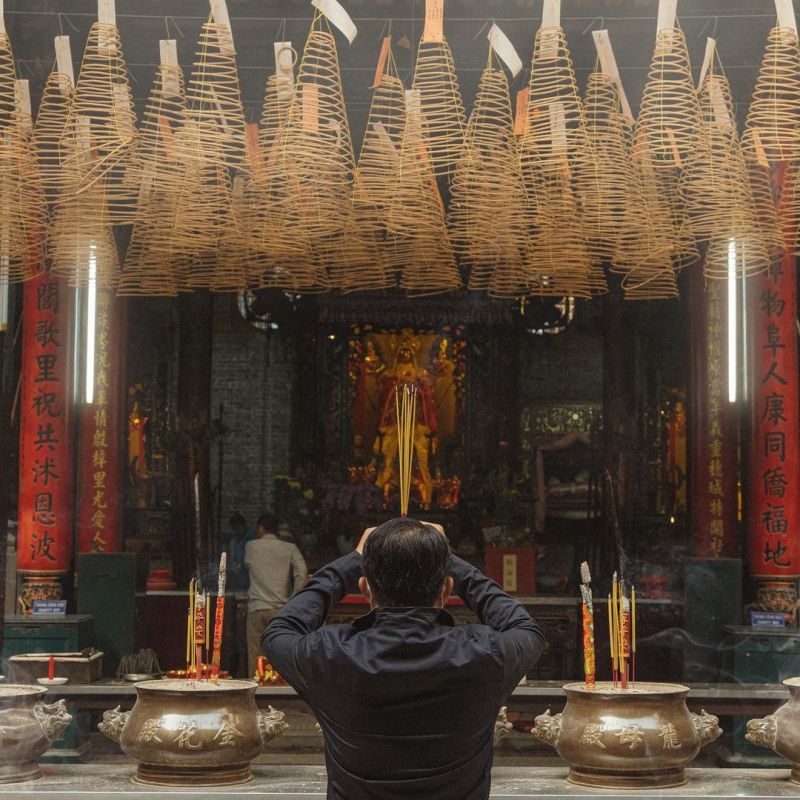
The halls are decorated with beautiful flower and bird patterns and red and yellow parallel sentences that create a warm and welcoming atmosphere. The pagoda also features a four-panel painting of the “four spirits” animals, along with round statues and detailed ceramic reliefs on the roof, porch, altars, and walls, enhancing its ornate beauty.
Indoor sections
Inside Thien Hau Pagoda, the main hall, called Thien Hau Cung, features a central statue of Lady Thien Hau. This statue, carved from a 1-meter-high wooden block, was originally worshipped in Bien Hoa before being moved to the pagoda in 1836. On either side of Lady Thien Hau are statues of Kim Hoa Nuong Nuong on the right and Long Mau Nuong Nuong on the left, both made of colored hard paper. All the statues are dressed in beautiful embroidered clothing.
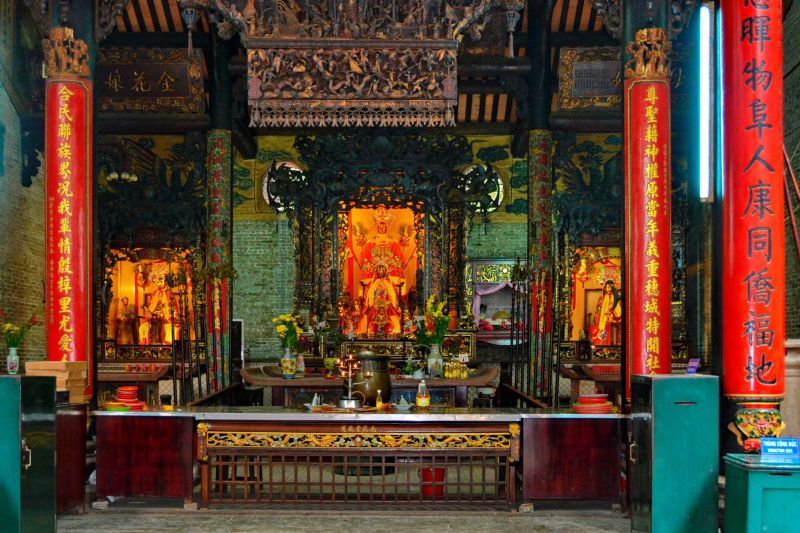
Another captivating feature of Thien Hau Pagoda is incense rings hanging from the ceiling, each adorned with colorful ribbons. These unique incense rings not only add a splash of color but also create an enchanting sight as the incense smoke and light gently rise toward the heavens. Visitors can buy incense rings, write their wishes or prayers on paper then hang the paper with an incense stick as a way to make requests or pleas to Lady Thien Hau.
The pagoda also houses a collection of around 400 well-chosen antiques, such as statues, steles, bells, incense burners, diaphragms, and embossed paintings. These items feature detailed and delicate designs, showing the dedication and craftsmanship of the Chinese community.
Location
Thien Hau Pagoda is located in the central area of Cho Lon at 710 Nguyen Trai Street, District 5, Ho Chi Minh City. Next to the pagoda is the Tue Thanh Guild Hall, where Chinese people from Guangdong gather. About 7 kilometers away is Nguyen Hue pedestrian street, a wide and lively road.
- Opening hours: 6 AM – 11:30 AM, 1 PM – 4:30 PM.
Best Time To Visit
Thien Hau Pagoda is one of the most renowned pagoda temples in Ho Chi Minh City, attracting locals and tourists daily. The best time to visit is in the early morning to avoid the crowds and fully appreciate the peaceful and tranquil atmosphere.
How To Get There
- Taxi: If you’re in District 1, catching a taxi is also convenient. Taxi fares typically range from 50,000 to 100,000 VND for the approximately 5-kilometer trip to Thien Hau Pagoda. Ho Chi Minh City has many taxi companies like VinaSun or Mai Linh, offering reasonable rates.
- Motorbike: Renting a motorbike to explore Thien Hau Pagoda and other tourist spots in Ho Chi Minh City is convenient and budget-friendly.
- Ride-hailing app: Using Grab or Gojek on your phone to book a car or motorbike ride is another affordable option.
The Thien Hau Pagoda Festival
Thien Hau Pagoda welcomes many visitors daily who come to pray for safety, prosperity, and other blessings. The busiest times at the pagoda are the first and full moon days of each month, Lunar New Year, and especially Ba’s Day, which falls on March 23rd of the lunar calendar and is considered the main festival.
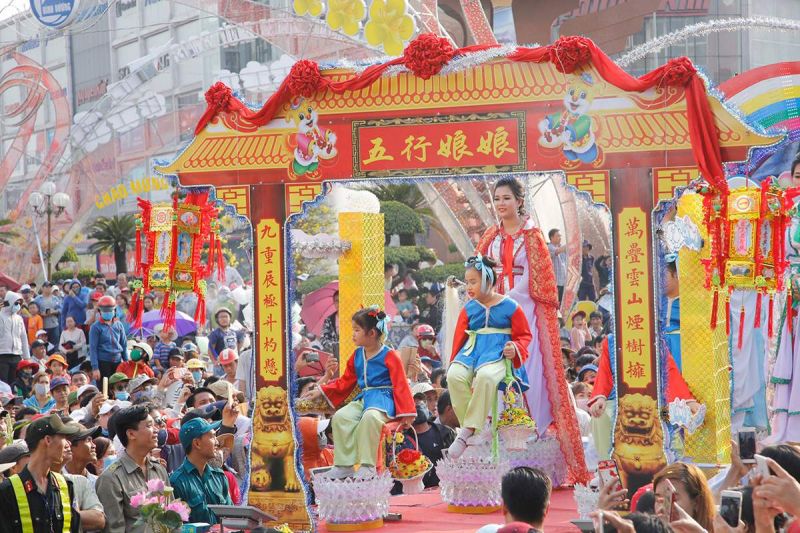
On Ba’s Day, both Chinese and Vietnamese worshippers gather to honor Lady Thien Hau. The festivities begin the night before with a “Ba” bathing ceremony at the pagoda.
On the morning of the 23rd, a grand procession ceremony takes place, where Lady Thien Hau’s statue is placed in a palanquin and carried by young people dressed in beautiful attire.
The procession includes dragon boats, red boards with the names of gods, and various dance teams, such as lion and dragon dancers, accompanied by ethnic music performances. The neighborhoods around the pagoda become bustling with activity, creating a vibrant and lively atmosphere.
Attractions Nearby
- War Remnants Museum: This museum offers a deep look into the Vietnam War, with many exhibits and artifacts that tell the story of the country’s past struggles.
- Independence Palace: Known also as the Reunification Palace, this historic building is where the Vietnam War officially ended in 1975 when a tank crashed through its gates.
- Ben Thanh Market: A lively market where you can find everything from fresh food to unique souvenirs, perfect for experiencing local life.
- Jade Emperor Pagoda: A beautiful Taoist temple known for its detailed carvings and statues, dedicated to the Jade Emperor, a key figure in Taoist beliefs.
- Saigon Notre Dame Cathedral: Built by the French in the late 1800s, this cathedral is a major landmark with its impressive architecture and stained-glass windows.
- Saigon Central Post Office: Designed by Gustave Eiffel, this grand post office features stunning French colonial architecture and a beautiful interior.
- Saigon Opera House: Also called the Municipal Theatre, this lovely building hosts various performances, including ballet and opera.
- Bitexco Financial Tower: One of the tallest buildings in the city, it has a Skydeck offering amazing views and a unique helipad design.
- Cu Chi Tunnels: A short drive from the city, these tunnels were used by Viet Cong soldiers during the Vietnam War. Visitors can take guided tours to learn more about their history.
Useful Tips
- Wear respectful clothing that covers your shoulders and knees. Avoid wearing revealing attire.
- Pay attention to local customs and rituals. If you see worshippers making offerings or burning incense, observe respectfully.
- Before taking photos, especially of people or ceremonies, ask for permission. Some areas or events may be off-limits to photography.
- Consider making a small donation to support the maintenance of the pagoda. There are often donation boxes available.
- If you have questions, do not hesitate to ask locals or temple staff. They can give you helpful information.
Wrapping Up
As you plan your holiday in Ho Chi Minh City, do not miss the opportunity to visit Thien Hau Pagoda for an enriching cultural experience. Explore the other vibrant cities of Vietnam with our exclusive Vietnam tour packages, offering authentic cultural experiences and personalized itineraries tailored for Indian travelers. Discover the essence of Vietnam with us today!
OTHER ATTRACTIONS IN CHO LON

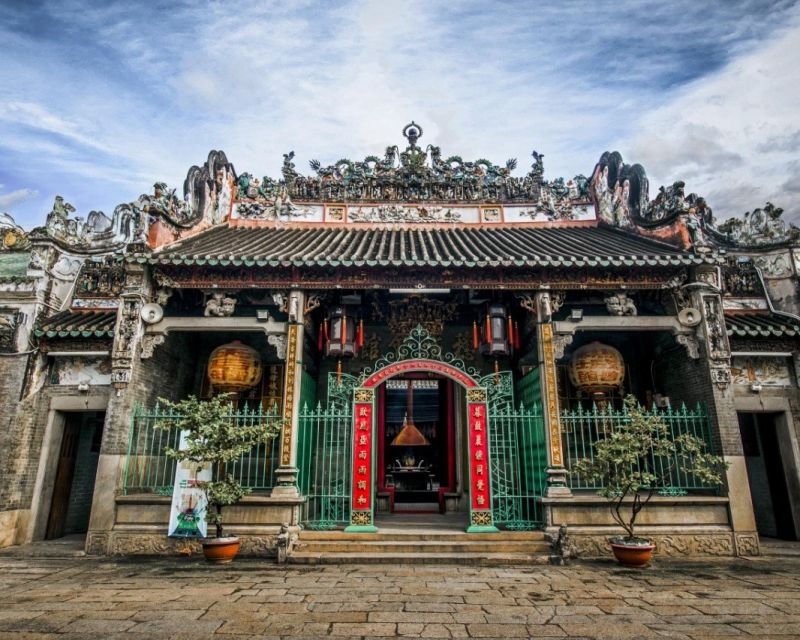
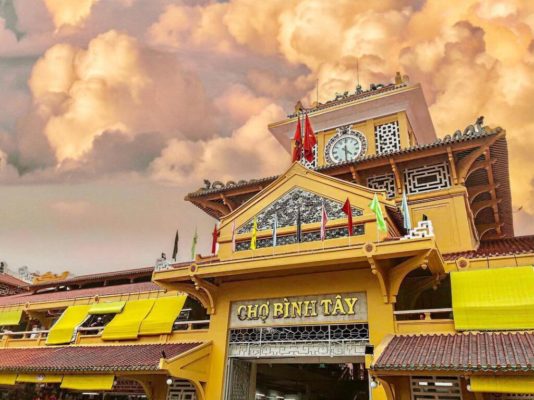
1 Countries 6 Cities
Vietnam Highlights Discovery
Departure City: Mumbai
Latest Departure Date: December 06 2025
15 seats left
Starting fromSave 35% ₹1,12,000
per person on twin sharing with airfares